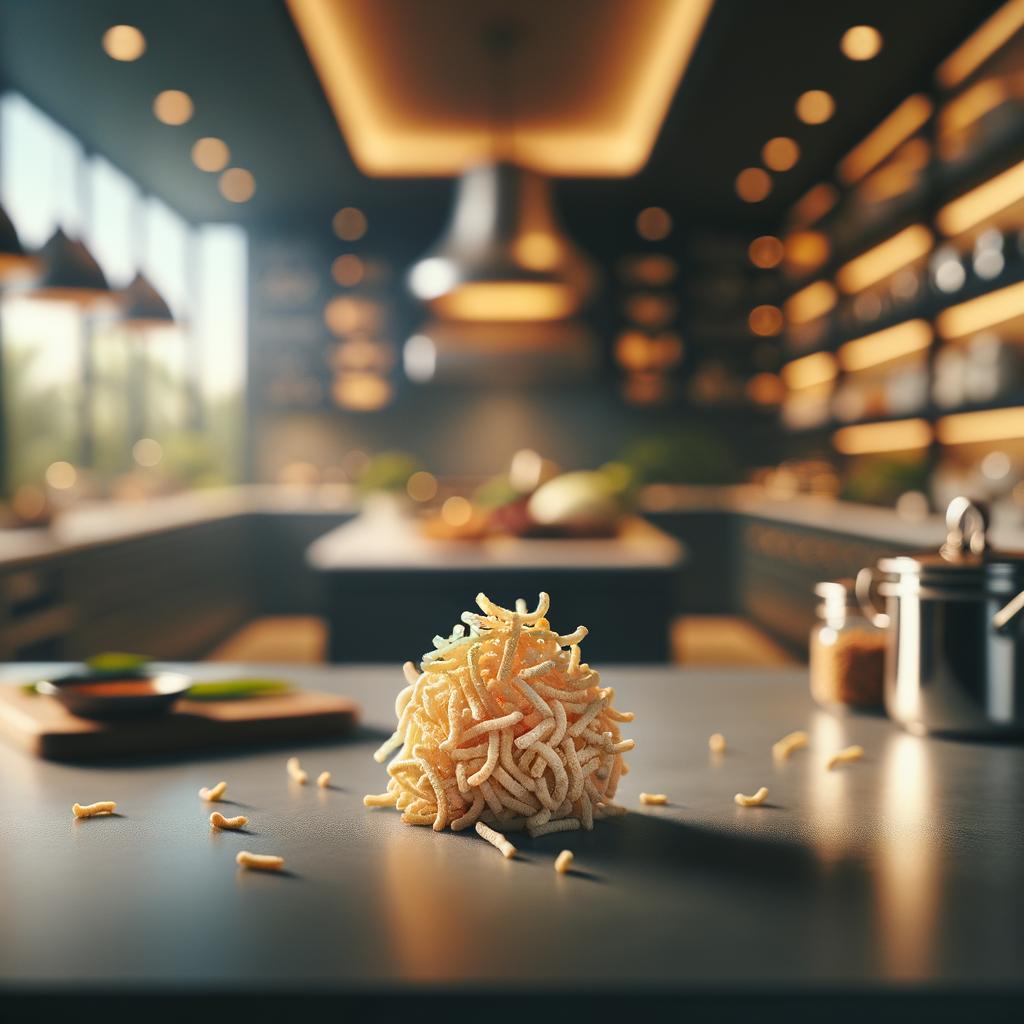Sev

Description
Sev, a beloved ingredient in Indian cuisine, is a type of crunchy noodle made from chickpea flour paste. It has a distinctive golden-yellow hue, and its appearance can be likened to a pile of delicate, thin threads or squiggly lines. The texture is delightfully crunchy, and it has a mild, slightly nutty flavor. What sets Sev apart from other similar ingredients is its versatility. It can be spiced with turmeric, cayenne, and ajwain seeds, or left plain, offering a wide range of flavor profiles for various dishes.
Primary Uses
Sev is commonly used as a topping or an ingredient in a variety of Indian dishes. It is a key component in popular street foods like Sev Puri, Bhel Puri, and Ragda Pattice, adding a delightful crunch to these savory snacks. It's also used in Sev Tameta, a Gujarati curry where it's the main ingredient. Beyond culinary uses, Sev also holds cultural significance in India. It is often prepared during festive occasions, and its intricate preparation process is considered a cherished family tradition in many households.
History
The origins of Sev are deeply rooted in the rich tapestry of Indian culinary history. It is believed to have originated in the western state of Gujarat, where it is still a staple ingredient. Over time, its popularity spread across the Indian subcontinent, with each region adding their unique twist to it. One fascinating folklore associated with Sev is the tale of a Gujarati woman who invented it to appease her hard-to-please mother-in-law. The crunchy Sev won her mother-in-law's heart, and the recipe has been passed down through generations since then.
Nutritional Information
Sev, made from chickpea flour, is a good source of protein and dietary fiber. It also contains essential minerals like iron and magnesium. However, due to its deep-frying process, it can be high in fat, so moderation is key. When compared to other similar snacks, Sev stands out because of its protein content, courtesy of the chickpea flour. It's a delightful ingredient that, despite its humble origins, has carved a niche for itself in the grand narrative of food history.

